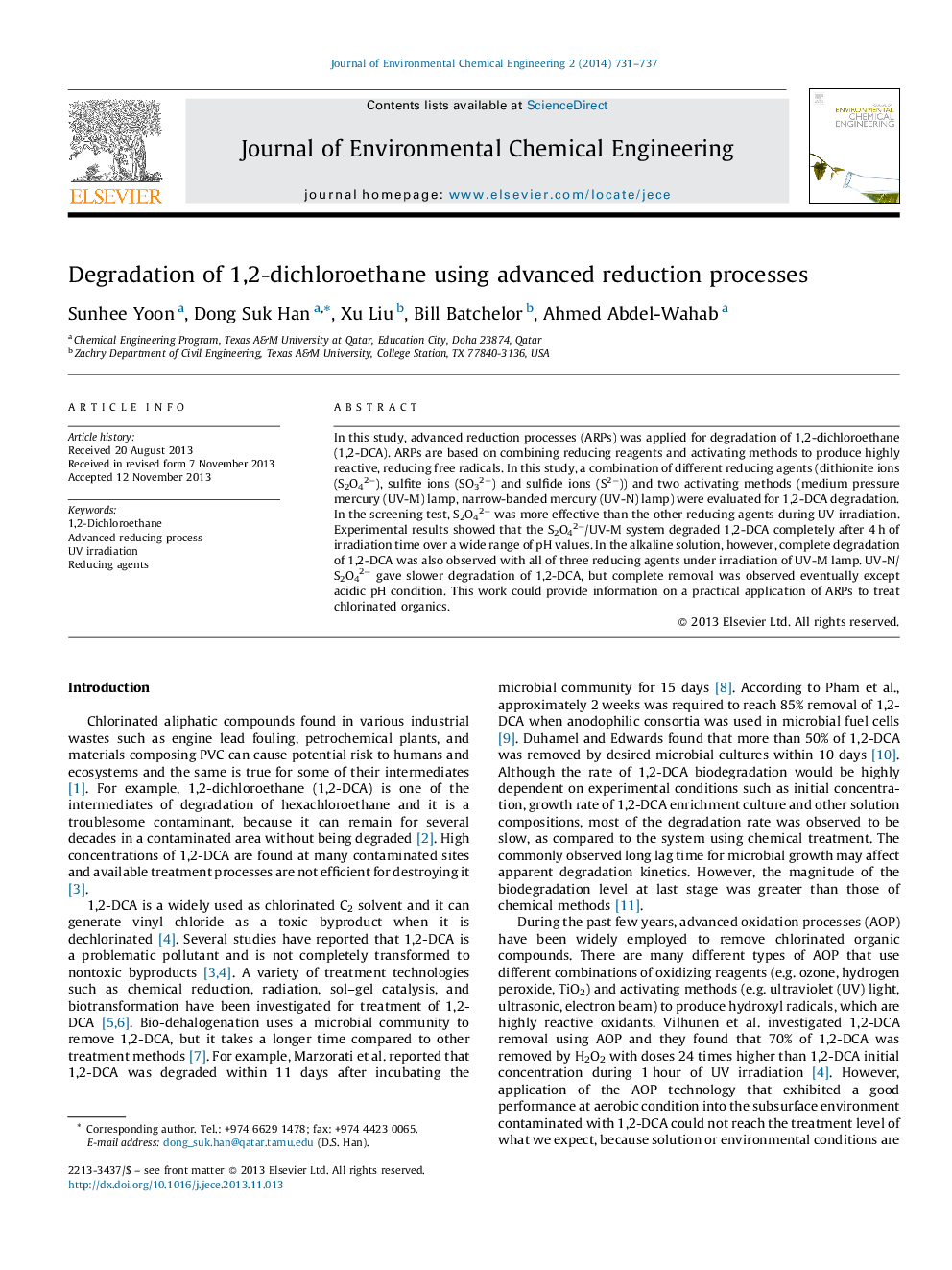| کد مقاله | کد نشریه | سال انتشار | مقاله انگلیسی | نسخه تمام متن |
|---|---|---|---|---|
| 222190 | 464270 | 2014 | 7 صفحه PDF | دانلود رایگان |
• More reactivity of 1,2-DCA in output wavelength of UV-N than UV-M lamps.
• Higher degradation of 1,2-DCA using S2O42− with UV-M in the range of pH studied.
• Complete degradation of 1,2-DCA by S2O42−, SO32− and S2−/UV-M at basic pH.
In this study, advanced reduction processes (ARPs) was applied for degradation of 1,2-dichloroethane (1,2-DCA). ARPs are based on combining reducing reagents and activating methods to produce highly reactive, reducing free radicals. In this study, a combination of different reducing agents (dithionite ions (S2O42−), sulfite ions (SO32−) and sulfide ions (S2−)) and two activating methods (medium pressure mercury (UV-M) lamp, narrow-banded mercury (UV-N) lamp) were evaluated for 1,2-DCA degradation. In the screening test, S2O42− was more effective than the other reducing agents during UV irradiation. Experimental results showed that the S2O42−/UV-M system degraded 1,2-DCA completely after 4 h of irradiation time over a wide range of pH values. In the alkaline solution, however, complete degradation of 1,2-DCA was also observed with all of three reducing agents under irradiation of UV-M lamp. UV-N/S2O42− gave slower degradation of 1,2-DCA, but complete removal was observed eventually except acidic pH condition. This work could provide information on a practical application of ARPs to treat chlorinated organics.
Figure optionsDownload as PowerPoint slide
Journal: Journal of Environmental Chemical Engineering - Volume 2, Issue 1, March 2014, Pages 731–737
